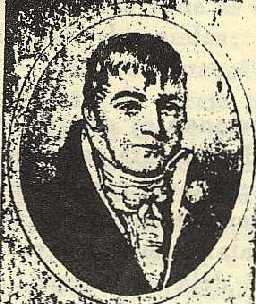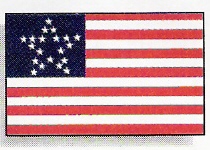News History Newsletters Photos Model Shipmates Contact
For War Stories about the USS REID 369
click on the ship:
USS REID (DD369) 1936-1944
The third ship of the line named for Samuel Chester Reid, all of them destroyers, was built by the Federated Shipbuilding and Dry Dock Company, Kearney, New Jersey and commissioned on November 2, 1936. Her first commanding officer was Cdr. Robert Carney, later to become Chief of Naval Operations, the U.S. Navy's highest ranking officer.
REID was a sleek and fast warship, authorized during the middle of the Great Depression to replace the worn out destroyers of the World War I era.
The new REID was assigned to the Pacific Fleet, home ported first in San Diego, then in 1939 moved to Pearl Harbor, Hawaii. After the war broke out in Europe, Japan became an increasing threat in the Far East. The REID accompanied a task force of U.S. warships to Australia, early in 1941, as a show of force and support.
When the Japanese attacked on December 7, 1941, the REID was in Pearl Harbor alongside the destroyer tender, USS Whitney. Much of her fire control, navigation, and power plant instrumentation was dismantled for servicing. The boilers were cold. No ship was ever put back together so fast.
The REID was out of the harbor by mid-morning. Rumors on the island of Oahu were rampant. Honolulu radio reported at various times during the day, evening, and into the next morning that a Japanese invasion force was about to land, enemy parachutists had landed, that saboteurs were at work on Oahu, that a sea battle was in progress just over the horizon. The REID joined several other ships with orders to circle the island of Oahu in search of the enemy. None was found. View the log of the ship the USS Antares on December 7th.
War Service
During the first months of the war, the REID did convoy duty between Hawaii and mainland United States. In the spring of 1942, she was sent with a small task force to the Aleutian Islands to defend against a Japanese attack that was part of the Battle of Midway. During this period, the REID bombarded Japanese positions on Kiska and sank a Japanese submarine, taking prisoners who became the first imprisoned in the U.S. Later in 1942 the REID joined American forces holding on at Guadalcanal.
USS REID leaves Mare Island in 1943
After refitting in Mare Island shipyard in July 1943, the REID joined the Seventh Fleet in support of MacArthur's amphibious landings along the coast of New Guinea and nearby islands, fiercely defended by the Japanese. Beginning in September of that year into the summer of 1944, the REID was engaged in what seemed to be constant combat with torpedo planes, high level bombers, fighter planes, dive bombers and submarines. There was a mid-term diversion for a few liberty days in Sydney, Australia, then back to the fray.
Last Deployment
In the summer of 1944 the REID returned briefly to Pearl Harbor, before rejoining the Seventh Fleet and MacArthur's return to the Philippines at Leyte. The Japanese defense of Leyte was intense by air and by sea. The last major naval engagement in the Pacific was fought in the Leyte Gulf when the Japanese marshaled its remaining warships in a showdown battle. The decisive defeat in this battle rendered the Japanese Navy ineffective for the remainder of the war.
But the Japanese still had an awesome and increasingly effective weapon remaining: the Kamikaze or suicide plane. The U.S. Navy acknowledged that "if the [suicide] plane is not shot down or so severely damaged that its control is impaired, it almost certainly will hit its target."
In the REID's final two weeks in the waters around Leyte, the crew was able to sleep only an hour or two at a time. They were called to battle stations (condition red) an average of 10 times a day. It was a period of near constant combat.
In her final hours on December 11, the REID was protecting a re-supply force of amphibious craft bound for Ormoc Bay off the west coast of Leyte. About 1700 twelve enemy planes approached the convoy. The REID was the nearest ship to the oncoming planes. Planes 1 and 2 were shot down by the 5" battery. Plane 3 exploded about 500 yards off the starboard beam. Plane 4 hooked a wing on the starboard rigging, crashing at the waterline. His bomb exploded, doing considerable damage forward. Plane 5 strafed the starboard side and crashed on the port bow. Plane 6 strafed the bridge from the port side and crashed off the starboard bow. Planes 5 and 6 apparently had no bombs or they were duds. Plane 7 came in from astern strafing and crashed into the port quarter. His bomb exploded in the after magazine blowing the ship apart. All this action took place in less than a minute.
The ship was mortally wounded but still doing 20
knots. As the stern opened up, she rolled violently, then laid over on her
starboard side and dove to the bottom at 600 fathoms. It was over in less
than two minutes. 103 shipmates went down with her. The survivors
were strafed in the water by Japanese planes before rescue.
View Images of Reid Sinking
The Record The REID was in the war from the very first day at
Pearl Harbor. She participated in 13 amphibious landings, 18 shore bombardments,
shot down 12 enemy planes, sank one submarine, captured eight Japanese
prisoners, steamed over 220,000 miles and expended over 10,000 rounds of 5"
projectiles. The USS REID DD-369 was a 1500 ton destroyer of the
MAHAN class, 341' in length and almost 35' in the beam. She was originally
fitted out with five 5" dual purpose guns, 50 cal. machine guns and 12
torpedo tubes. Later, one 5" gun was traded for twin mounted 40mm
guns and the machine guns gave way to 20mm guns. A crew of 168 put the REID into
commission, 268 were aboard when she went down, of whom 165 survived. Who was Samuel Chester Reid? Reid was born in Connecticut in 1783 and at the age
of 11 signed aboard a merchant ship during the undeclared war with France and
was captured. He entered the U.S. Navy as a midshipman but returned to the
merchant service. When the War of 1812 broke out, Reid was 29 years old
and captain of a privateer brig, the General Armstrong. With few warships in service, the U.S. was ill
prepared to defend itself against the British blockade. America's main
naval weapon became the privateer, which raided the shipping lanes vital to the
British economy and their war in Europe. Reid operated in the
Atlantic. Late in 1814, he hove-to in the Azores, a neutral port, for fresh
water. Before he could leave, three British warships came into the
harbor. There was no escape to the sea. The British attacked the
General Armstrong all night with gunfire and attempted boardings. Reid
inflicted heavy losses on the British, both in lives and in damage to their
ships. However, by dawn it had become hopeless. Reid scuttled his
ship to prevent its capture and sought asylum with his crew in the town. The British ships were intended to participate in
the seizure of New Orleans. The nearly two week diversion in the Azores to
repair the damage caused by Reid to their ships, is deemed by some historians as
delaying the entire British battle plan. This gave General Andrew Jackson
additional time to mount a successful defense of the city. Although one might say that the war was over before
the Battle of New Orleans, the treaty documents were not signed until some time
later, and might not have been signed at all if the British had taken New
Orleans. By the time Reid returned to the States, peace was
in celebration. It was an age when the media allowed heroes. Samuel
Chester Reid was declared a hero. Samuel Chester Reid also should be remembered as the
one who proposed a design for the nation's flag---
thirteen permanent stripes,
with a star representing each state. Congress adopted his recommended
design in 1818 and it is still in use today. Reid died in 1861 at the age
of 77. Below are links to sites about the USS Reid
369. Just click on the ship
icon.


History of the REID at en.wikipedia.org
History of the REID's action at Pearl Harbor
History of the REID at Pearl Harbor at
www.ibiblio.org
History of the REID at www.ibiblio.org
History of the REID at www.historycentral.org
History of the REID's action at Pearl Harbor
History of the Battle of Leyte